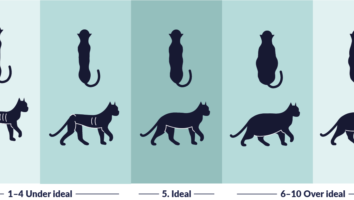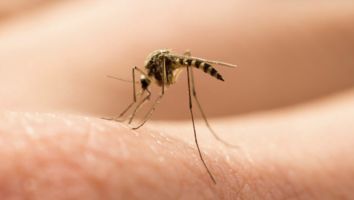Articles
Articles, questions and guides on pet care.
Vomiting vs regurgitation in dogs and cats - what is the difference?
All pet owners will know that vomiting is a common problem in dogs and cats. However, it is important to know the difference between vomiting and regurgitation. Regurgitation in dogs and cats has…
Colitis in dogs - a common cause of diarrhoea
Colitis in dogs means that the patient is suffering from inflammation of the large intestine (colon). Many dogs will suffer from colitis at one stage in their lives and this is also a common puppy…
The power of hand feeding for training your dog
Hand feeding is the not-so-secret method used by many dog trainers that all dog owners should know about. It's the fastest way to build a bond with your dog to make all your training quicker, easier…
Lungworm infection in dogs
Lungworm (Angiostrongylus vasorum) is a life-threatening disease of dogs. The number of cases in the UK over the last few years seems to be rising. Our vet explains what signs you should look out…
What are dog food allergies?
Everybody has heard of food allergies by now or knows people who have them. Dogs can also get food allergies, but they like to do them differently than people. Read on to learn how to recognise them.
Is my cat too fat or too skinny? A guide to body condition scoring in cats
Have you ever wondered if your cat is an ideal weight? How do you know if you need to cut out on some of the treats? It is important to keep your cat an ideal weight throughout their life to prevent…
Can our dogs communicate with us? How to give our dogs choices and enrich their lives
As caring dog owners, we want to build a strong relationship with our pets based on mutual trust and respect. But one aspect of our dogs’ lives less often considered is the importance of choice.…
Heartworm disease in dogs
Heartworm is a parasite, which is transmitted by mosquitoes. Heartworm infection is much more common in dogs than cats, but it can cause serious illness and even death in both species. Preventative…
Heartworm disease in cats
Heartworms (Dirofilaria immitis) are transmitted to cats by mosquitoes. Cats who travel abroad or who are adopted from outside the UK are most at risk and preventive precautions should be taken in…
What your vet wished dog owners knew
Dogs have never been so popular. Yet, as vets know only too well, there are still many myths and misconceptions about our canine buddies. And quite a few of them can unfortunately lead owners down a…
Lameness in cats
Cats can become lame for many reasons. Cats may develop an abscess from a cat bite, a wound, sprain, fracture or a sting in the paw. Some lameness can also be caused by joint problems in the leg.…
Lameness in dogs
Dogs can become lame for many reasons, such as a wound, insect sting, sprain or fracture. Other causes include joint problems, such as osteoarthritis. In this article we talk about symptoms,…
Hairballs in cats
Cats are very good at keeping themselves clean but they also swallow fur when they are washing. If large amounts of fur accumulate in the stomach hairballs can form. Hairballs are something that can…
Taking your pet's temperature
The only way to determine if your pet has a fever is to use a thermometer. We show you how to do this with a few quick and easy steps to help you take your pet's temperature safely and accurately.
Fever in dogs and cats
Having a body temperature that is higher than normal is usually associated with fever. A fever is typically caused by inflammation or infection. A temperature rise is part of the body's normal…
Can dogs catch a cold?
Can dogs catch colds? Dogs can, just like humans, get cold symptoms with a runny nose, cough and sneezing. In this article you will learn more about the most common causes of runny noses and other…
Where to start with your new puppy? You need a plan
If you're a new or soon-to-be puppy owner and are currently feeling a little overwhelmed, you need a plan! A step-by-step guide to keep you on the right path, at least one paw ahead of your puppy.…
7 ways to give your dog a very happy Christmas – and most of them won’t cost you a penny!
Christmas is an exciting time for humans and is also a time when we can do something special for the dogs in our lives. Christmas is a time that we can show our dogs how loved and appreciated they…























